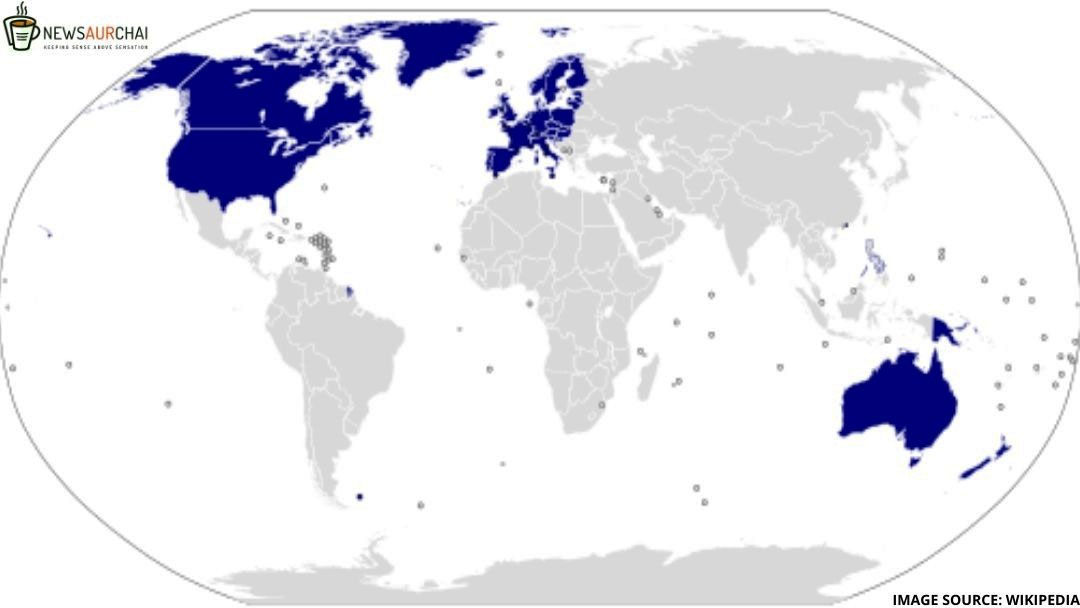
COVID-19 though originated in China and had hit several Asian countries way before moving to the West, the United States is now the new epicentre of the shifting epidemic.
The number of cases in the West is skyrocketing, and the countries are being forced to take drastic measures, whereas, some Asian countries like Taiwan, Singapore, Hong Kong, are being praised for competently tackling the virus. All these countries have effectively kept the numbers relatively low despite their proximity to mainland China.
There was just a difference of 10 days between the first reported cases in Taiwan and Italy; as of March 28, Taiwan has recorded only 283 cases and two deaths while in Italy there is more than 86,498 cases and 9,134 deaths, overtaking China’s death toll.
It is now the West that poses a threat towards the rest of the world, and the Asian countries are currently battling against the contagion from the West. Italy, Spain, USA, UK, Germany, France, have shown the exponential explosion in cases after weeks of negligence and inaction by their governments. Meanwhile, the Asian countries had been fighting against the deadly pathogen since January, have somewhat managed to wrestle the virus into submission.
Before the advent of COVID-19, some Southeast Asian countries including China, Hong Kong, South Korea, Taiwan have had the experience of dealing with infectious diseases like the SARS outbreak of 2003, MERS and Ebola.
Kenji Shibuya, former chief of health policy at World Health Organisation feels these countries “have accumulated knowledge and practices, so there’s room for other countries to learn from their experiences.” The mood of these countries also differs significantly from the sense of confusion and panic in Europe and US, where the people are seemingly surprised with the pandemic and their health systems are not quite prepared to counter it.
Where the Western Countries lacked:
Understanding Gravity of Situation:
The West had around two months to prepare for the outbreak, but they showed an arrogant outlook towards China and other Asian countries that were suffering from the outbreak weeks before them and made a huge mistake by considering that China was too far away from their reach. Moreover, US President Trump chose to downplay the risks of the virus, and encouraged xenophobia by calling it “China virus“.
In Asian countries, early travel restrictions, aggressive testing and screening, contact-tracing, stringent quarantine rules, precise management, universal healthcare, proactive communication had kicked in promptly. Now though the West is going under lockdown, the measures came in way too late.
Extensive Cost-Effective Tests
South Korea was extensively affected following China, and it swiftly developed testing kit by the end of January, when it had fewer than ten infections. Now 2,90,000 people have been tested with about 10,000 people being tested daily. The urgency in its approach was facilitated due to its MERS-experience of 2015.
On the contrary, the initial testing kits of US were faulty; private labs couldn’t get their tests approved; people couldn’t afford the expenses of getting tested. Thailand provided free testing and treatment of high-risk patients, and as a result, 95 per cent of over 4800 patients under inspection had voluntarily gone to hospitals as of March 11.

Mass Quarantine and Social Distancing
Hong Kong became a “ghost town” in early February as the country went under voluntary lockdown. Social gatherings were called off with the initiative of the people; around 74-98 per cent of residents wore masks while leaving home.
China’s surprising action to lockdown Hubei province in late January and quarantining 60 million people was effective in slowing down the infection rates. However, according to experts, people are bound to follow quarantine rules diligently in authoritative regimes like China and challenging to implement in liberal democratic Western countries.
Italy, Spain have forced national lockdowns recently, but the infection rates have already surged massively. The difference in attitudes of the people play a significant role in this aspect, and the considerable variation between Western and Eastern cultures are prominent.
Tracing and Isolation
A centralized response team in Taiwan integrated the national health insurance, immigration and custom databases, to generate data which trace people’s travel history and clinical symptoms. Taiwan also used mobile phones to track people coming from high-risk areas and quarantining them.
In Singapore, 6000-plus people were contact-traced by detectives with the help of CCTV footage, tests, self-isolating orders and they have hefty penalties for violating these rules.
In Hong Kong, electronic bracelets have been used to trace the movement of people coming from abroad. South Korea had used government data and news reports to develop technologies to outline the areas visited by infected people before they were tested and provide information over smartphones to locate those areas that need to be avoided.
However, implemented these measures in the West is difficult due to their larger populations and liberal outlooks.
This is what the West needs to learn from Asia to counter COVID-19.





